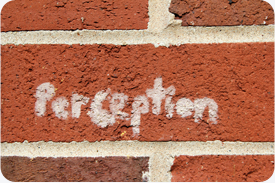Perception vs Reality: What Do You Value?
The advertising world is full of tricks and ploys for adjusting consumers’ views on products and services, but what do these tricks actually do? In a TED Talk from 2009 Rory Sutherland presented the idea of how changing perceived value can be just as satisfying as changing the real value. His findings reveal some interesting things for both advertisers and consumers.
Perceived value vs real value
When it comes to evaluating the value of a product, there are two way to measure it.
Real value is related to the actual manufacturing cost and the price the product is sold at for profit. In layman's terms, the real (or actual) value is what the product is actually worth, without any outside expectations from the consumer or seller.
Perceived (or intangible) value is what consumers think the product is actually worth. As marketers, we create intangible value to make up for real value. According to Sutherland, perceived value can be used to “make new things familiar and familiar things new.”
Creating perceived value
In his presentation, Sutherland discusses how advertisers can build perceived value in multiple ways—from creating symbolic value to adding contextual information—thus increasing the overall value of the product to consumers. However, like Sutherland said, you should remember that all value is subjective. But how do we create perceived value?
Sutherland asked a compelling question: can we tinker with perception rather than trying to change reality? Well, we can. In fact, Frederick the Great of Prussia tested this idea back in 1774, when he rebranded the potato.
Frederick used a little reverse psychology when his subjects rejected the idea of growing potatoes to protect against famine. After the public rejected the potato, Frederick declared it a royal vegetable and had it planted in the royal garden with guards protecting it night and day. However, the guards had secret orders to not guard the potato very well.
As Sutherland put it, peasants tend to know if something is worth guarding, it’s worth stealing. Thus began a massive underground potato growing operation and the potato was rebranded.
Although no actual modifications were done to the potato itself, Frederick the Great was able to tinker with the public’s perception of the vegetable. When declaring the potato strictly a royal vegetable, it sparked the public’s interest into why it was off-limits. The king made a familiar thing new.
Putting it to work
Creating intangible value provides fundamental opportunities to change consumer behavior without having to adjust the real value of your product/service—Sutherland discusses multiple examples of companies building intangible value as a substitute for using up labor or limited resources.
Although the way the intangible value was created varied throughout the companies, they all did one thing: increased the value of a product without doing anything to the actual product.
Strategy is key
Adjusting your product or service’s intangible value within your marketing strategy can provide efficient and cost saving methods to increase the overall value.
Are you using an outdated or ineffective marketing strategy? Download our Digital Marketing Guide to Growth to get started developing your content marketing strategy and showing your true value.
[Image credit: Quinn Dombrowski - license]
MONTHLY MARKETING INSIGHTS.
Get thought-provoking and actionable insights to improve how your firm makes a connection with your customers.





LEAVE A COMMENT